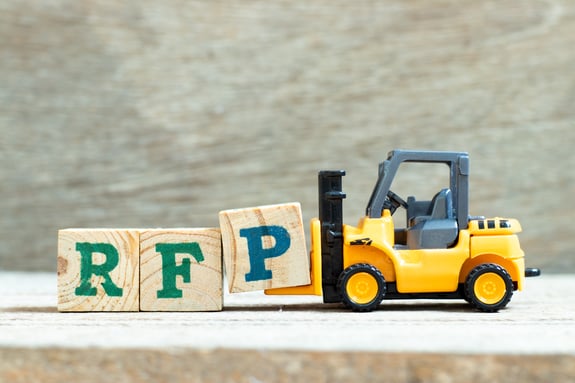Pallets are the unsung heroes of the supply chain. Retailers and manufacturers rely on their pallet providers to help keep their products safe, operations efficient, and bottom lines healthy. In recent years, rapid price fluctuations have pushed organizations to conduct pallet RFPs more frequently than ever before.
This is why it’s so critical for procurement departments to avoid the common RFP mistakes that can cause rollout delays, post-award price adjustments, and disruptions across the organization. The good news is choosing the right pallet provider can help you avoid these mistakes.
Below are five common pallet RFP mistakes as well as what to look for in a provider to ensure your RFPs are setting you up for success.
#1 Outdated or Incorrect Specifications
Large manufacturers typically issue a pallet RFP at least twice a year - sometimes even monthly - to keep up with market pricing, but they often reuse the same spreadsheets each time. While this practice certainly saves time, old files can contain outdated or incorrect specs due to changes at the facility level that haven’t been communicated to procurement.
Pallet providers then submit pricing for – and facility managers end up receiving – pallets that don’t fit their needs, leading to various issues that can harm operations. When pallet specs aren’t correct in the RFP, pallet providers often have to update the price later, which affects the site’s expected cost and causes delays as the facility and pallet provider work to ensure the correct pallet specs are met.
Avoid these issues by partnering with a pallet provider with experienced local facility managers who can work with yours during the RFP to validate specs on-site and identify any inconsistencies before it’s too late. Seek a provider with locations nationwide and a large network of trusted third-party partners, so that it’s easy for your provider to put boots on the ground and assist you in the RFP process.
#2 Outdated or Incorrect Volumes
Using the same spreadsheets without updating volumes between RFPs causes many of the same headaches as sending out RFPs with outdated specs. If the agreed-upon commitment in the contract calls for volumes that end up too low or too high, the pallet provider may need to adjust the price and/or be unable to fulfill orders.
The right pallet partner will work with you to review your historical volumes while considering seasonality and other market dynamics to ensure accurate deliveries that keep your operations running smoothly and cost-effectively. This can be a challenge for pallet providers that haven’t been doing it long and don’t have the depth of expertise from working with the biggest manufacturers and retailers.
Choose a provider with experience that goes beyond just pallets to onsite services, warehousing, 3PL, and transportation solutions. They’re not just going to know how to help you with things like specs and volumes – they’ll also know how every string that is pulled in the supply chain affects your business.
#3 Not Knowing if Specific Locations’ Needs Have Changed
Beyond specs and volumes, it’s also important to consider whether changes at any of your locations will impact your pallet needs. Does a facility still need heat-treated pallets or custom-sized pallets? Does a specific product really require new pallets?
Manufacturers can easily end up paying for more pallet horsepower than they need, driving costs up unnecessarily. Experienced pallet providers will reevaluate your needs over time and recommend the right grades and specs for the best balance of performance and cost. Some providers even offer a wide range of pallet types, from new and custom to recycled, to ensure you’re only paying for what you need at each location.
#4 Treating the RFP as a Price-Adjustment Exercise Only
Given how important it is to control supply chain costs, this is an easy trap to fall into. But when you don’t consider factors like service levels, which locations are assets versus brokered to a third party, and a company’s reputation, you may get more than you bargained for by going with the lowest bidder – and not in a good way.
This will inevitably force your facility managers to work with unreliable partners that have repeated service failures and low accountability. It also leads to procurement dealing with more vendors than necessary to keep their operations efficient. Make sure you choose a provider with a great reputation for service and strong third-party partners.
#5 Looking at Pallet Procurement in a Silo
Pallets affect many of your departments, including facilities, operations, and transportation. It’s critical for your procurement team to dig into all the value that a pallet provider can offer. Can they help lower your freight costs? Improve driver utilization? Help manage your reusable pallet and packaging returns? When you stop looking at pallet procurement in a silo, you open your whole business up to efficiencies and cost reductions you may not have considered before.
Conquer Your Toughest Pallet Challenges
Count on PLA to consult with you and make your RFP process successful by asking deeper questions.



